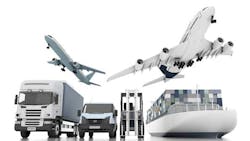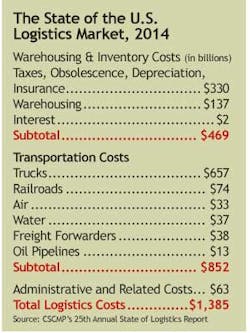Supply Chain & Logistics: Manufacturers Can't Hardly Avoid Waiting for Freight
From a logistics point of view, U.S. manufacturers have spent the past year doing a lot of waiting: waiting for the economy to improve, waiting for pickups and deliveries at their docks, waiting for the government to approve funding for federal highway programs, waiting for the sun to come out. Indeed, the various storms of Winter 2014 have been blamed for just about every negative earnings report, despite the fact that holiday retail sales were already off before the worst of the storms even hit.
As Jonathan Starks, director of transportation analysis with transportation forecasting firm FTR, explains, the severe winter weather "put a significant cramp on both transport capacity and on production days for much of the U.S." While the impact of the storm was expected to be short-lived, its memory lingers on, as it highlighted how tight the capacity situation has been and continues to be for both trucking and rail.
About the Author
Dave Blanchard
Senior Director of Content
Focus: Supply Chain
Call: (941) 208-4370
Follow on Twitter @SupplyChainDave
During his career Dave Blanchard has led the editorial management of many of Endeavor Business Media's best-known brands, including IndustryWeek, EHS Today, Material Handling & Logistics, Logistics Today, Supply Chain Technology News, and Business Finance. He also serves as senior content director of the annual Safety Leadership Conference. With over 30 years of B2B media experience, Dave literally wrote the book on supply chain management, Supply Chain Management Best Practices (John Wiley & Sons, 2010), which has been translated into several languages and is currently in its second edition. He is a frequent speaker and moderator at major trade shows and conferences, and has won numerous awards for writing and editing. He is a voting member of the jury of the Logistics Hall of Fame, and is a graduate of Northern Illinois University.


